Optimizing Your Grid: Power Transformer vs Distribution Transformer for Industrial and Utility Projects?
Are you struggling to decide between power transformers and distribution transformers for your industrial or utility project? You’re not alone. Many engineers and project managers find themselves confused about which type of transformer best suits their specific needs. But what if you had a clear guide to help you make this crucial decision, potentially saving millions in long-term costs and ensuring optimal grid performance?
Power transformers are used for high-voltage transmission, while distribution transformers deliver usable voltage at the final step. Choosing the right transformer type is critical for grid efficiency, especially in industrial and utility projects where load demands, voltage levels, and installation complexity vary. Understanding the key differences and applications of each type is essential for optimizing your power system.
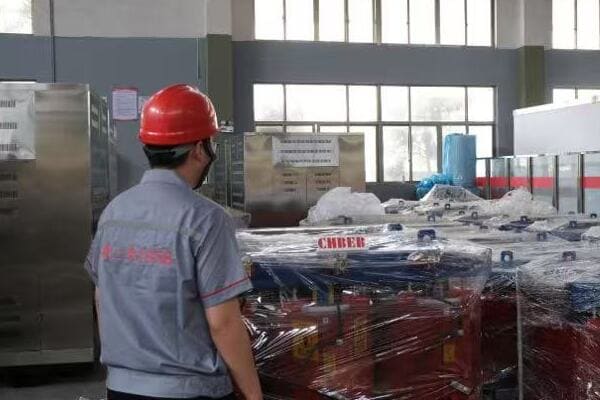
In this comprehensive guide, I’ll walk you through the critical differences between power and distribution transformers, their specific applications, and how to choose the right one for your project. We’ll explore real-world use cases, compare top brands, and provide a decision-making framework to ensure you make the best choice for your grid optimization needs.
Understanding the Role of Power Transformers in High-Voltage Transmission?
Have you ever wondered how electricity travels long distances from power plants to cities? This is where power transformers play a crucial role. But what exactly do these transformers do, and why are they so important in high-voltage transmission systems?
Power transformers are essential components in high-voltage transmission systems, typically handling voltages from 66kV to 765kV. They’re used to step up voltage at power plants for efficient long-distance transmission and step down voltage at substations for further distribution. These transformers are designed for high capacity, constant loads, and are crucial for minimizing power losses over long distances.
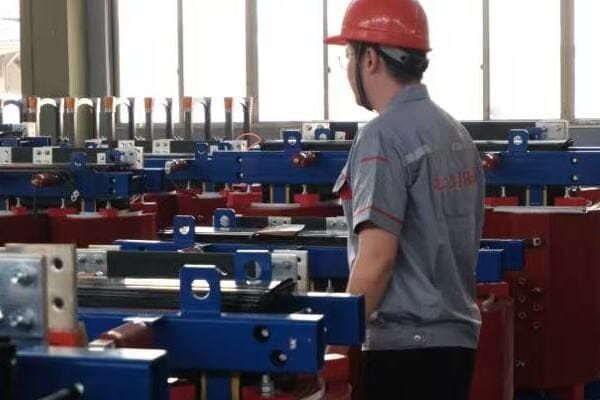
Exploring Power Transformers
Let’s break down the key aspects of power transformers:
- Voltage Ranges and Capacity
- Design and Construction
- Cooling Systems
- Efficiency and Losses
- Applications in the Grid
Voltage Ranges and Capacity
Power transformers handle high voltages:
- Typically range from 66kV to 765kV
- Capacities can exceed 1000 MVA
- Designed for step-up and step-down operations
I recently worked on a project where we installed a 500 MVA power transformer to connect a new wind farm to the national grid, showcasing the immense capacity these units can handle.
Design and Construction
Built for high performance and reliability:
- Large, robust structures
- Advanced insulation systems
- Specialized core designs for efficiency
During a factory tour, I observed the precision engineering involved in constructing these massive transformers, with some units weighing over 400 tons.
Cooling Systems
Sophisticated cooling is essential:
- Oil-immersed designs with forced cooling
- ONAN, ONAF, OFAF systems common
- Some use alternative fluids for environmental concerns
Here’s a quick overview of cooling systems:
| Cooling Type | Description | Typical Use |
|---|---|---|
| ONAN | Oil Natural, Air Natural | Smaller power transformers |
| ONAF | Oil Natural, Air Forced | Medium-sized units |
| OFAF | Oil Forced, Air Forced | Large power transformers |
Efficiency and Losses
Minimizing losses is crucial:
- Designed for high efficiency (often >99%)
- Use of low-loss core materials
- Careful consideration of load and no-load losses
Applications in the Grid
Power transformers are used in:
- Power generation plants (step-up)
- Transmission substations (step-down)
- Interconnection points between grids
Key points about power transformers:
- Handle very high voltages for long-distance transmission
- Large capacity for handling constant, heavy loads
- Sophisticated cooling systems for efficient operation
- Designed for minimal losses in high-voltage applications
- Critical for connecting power generation to transmission networks
In my experience, the selection of the right power transformer can significantly impact the overall efficiency of a transmission system. I recall a project where upgrading to a more efficient power transformer reduced transmission losses by 15%, resulting in substantial energy savings over time.
For instance, in a recent project for a utility company upgrading their grid infrastructure, we chose a state-of-the-art power transformer with advanced cooling and insulation systems. This decision not only improved the grid’s reliability but also increased its capacity to integrate renewable energy sources, showcasing the long-term benefits of investing in high-quality power transformers.
As we move on to discuss distribution transformers, keep in mind the critical role that power transformers play in the initial stages of electricity transmission. Understanding this context will help you appreciate the distinct functions and design considerations of distribution transformers in the power grid.
How Distribution Transformers Serve End-User Voltage Needs?
Have you ever wondered how the high-voltage electricity in transmission lines becomes the usable power in your home or office? This is where distribution transformers come into play. But what exactly do these transformers do, and why are they so crucial for delivering power to end-users?
Distribution transformers are the final step in delivering usable voltage to end-users. They typically handle voltages from 6kV to 35kV on the primary side and step down to 120V-600V for end-use. These transformers are designed for variable loads, are more compact than power transformers, and are essential for local power distribution in residential, commercial, and light industrial applications.
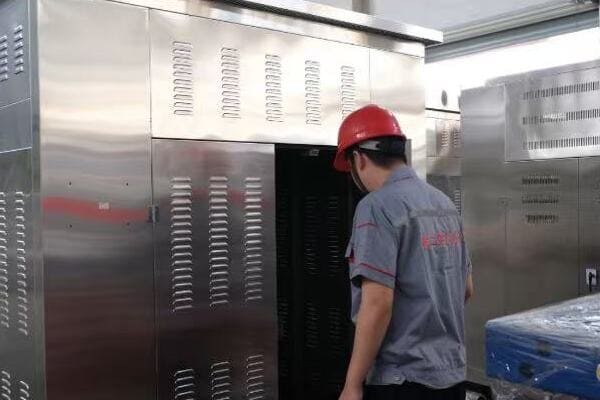
Understanding Distribution Transformers
Let’s explore the key aspects of distribution transformers:
- Voltage Ranges and Capacity
- Design and Construction
- Cooling Methods
- Efficiency Considerations
- Common Applications
Voltage Ranges and Capacity
Distribution transformers handle lower voltages:
- Primary voltages typically 6kV to 35kV
- Secondary voltages usually 120V to 600V
- Capacities generally range from 5 kVA to 5000 kVA
I recently worked on a project upgrading the distribution network in a growing suburban area, where we installed multiple 1000 kVA transformers to meet the increasing power demands of new residential developments.
Design and Construction
Built for versatility and reliability:
- More compact than power transformers
- Available in both oil-filled and dry-type designs
- Often pad-mounted or pole-mounted for easy installation
During a recent factory visit, I was impressed by the modular design of modern distribution transformers, allowing for easier installation and maintenance in urban environments.
Cooling Methods
Various cooling options available:
- Oil-immersed with natural cooling (ONAN) common
- Dry-type with air natural (AN) or air forced (AF) cooling
- Some use biodegradable fluids for environmental safety
Here’s a comparison of common cooling methods:
| Cooling Type | Description | Typical Use |
|---|---|---|
| ONAN | Oil Natural, Air Natural | Standard oil-filled units |
| AN | Air Natural | Indoor dry-type transformers |
| AF | Air Forced | Larger dry-type units |
Efficiency Considerations
Balancing efficiency and cost:
- Designed for good efficiency, typically 97-99%
- Focus on reducing both core and winding losses
- Often equipped with tap changers for voltage regulation
Common Applications
Distribution transformers are used in:
- Residential neighborhoods
- Commercial buildings and shopping centers
- Light industrial facilities
- Utility poles and underground vaults
Key points about distribution transformers:
- Handle final voltage step-down for end-user consumption
- Designed for variable loads typical in daily power usage
- Available in various designs for different installation needs
- Balance efficiency with cost-effectiveness for widespread use
- Critical for local power distribution in diverse settings
In my experience, selecting the right distribution transformer is crucial for ensuring reliable power supply to end-users while managing costs effectively. I recall a project where we replaced older distribution transformers in a commercial district with more efficient models, resulting in a 10% reduction in energy losses and improved voltage stability for local businesses.
For example, in a recent smart city project, we implemented a network of advanced distribution transformers with remote monitoring capabilities. This not only improved power quality for residents but also allowed the utility company to optimize load management and respond quickly to any issues, showcasing the evolving role of distribution transformers in modern grid systems.
As we move on to compare power and distribution transformers directly, keep in mind the specific roles each type plays in the power distribution chain. Understanding these distinct functions will help you make more informed decisions when selecting transformers for your projects.
Power vs Distribution: Key Differences in Voltage, Application, and Design?
Are you finding it challenging to distinguish between power and distribution transformers for your project? Understanding the key differences is crucial for making the right choice and optimizing your power system. But what exactly sets these two types of transformers apart, and how do these differences impact their applications?
Power transformers handle high voltages (66kV-765kV) for long-distance transmission, while distribution transformers manage lower voltages (6kV-35kV) for end-user delivery. Power transformers are larger, more expensive, and designed for constant high loads, often found in substations. Distribution transformers are smaller, more numerous, and built for variable loads, typically seen in residential and commercial areas. Their design, cooling systems, and efficiency considerations also differ significantly.
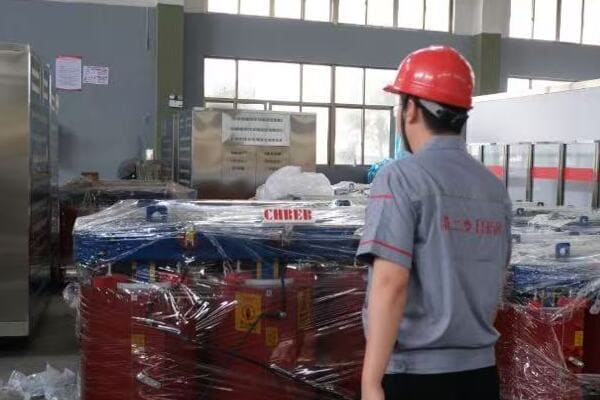
Key Differences Between Power and Distribution Transformers
Let’s break down the main differences:
- Voltage Ranges and Capacity
- Application and Location
- Design and Construction
- Cooling Systems
- Efficiency and Loss Considerations
Voltage Ranges and Capacity
Significant differences in handling:
- Power Transformers: 66kV to 765kV, capacities up to 1000+ MVA
- Distribution Transformers: 6kV to 35kV primary, 120V to 600V secondary, typically up to 5000 kVA
I recently worked on a project where we used a 500 MVA power transformer for a substation and multiple 1000 kVA distribution transformers for the local network, highlighting the vast difference in capacity.
Application and Location
Distinct roles in the power system:
- Power Transformers: Used in generation plants, transmission substations
- Distribution Transformers: Found in neighborhoods, commercial areas, on utility poles
During a grid modernization project, I observed how power transformers were centralized in key substations, while distribution transformers were widely dispersed throughout the service area.
Design and Construction
Built for different purposes:
- Power Transformers: Large, custom-designed for specific high-voltage applications
- Distribution Transformers: More standardized, compact, often mass-produced
Here’s a quick comparison of design features:
| Feature | Power Transformer | Distribution Transformer |
|---|---|---|
| Size | Very large | Compact |
| Weight | Hundreds of tons | Few tons |
| Customization | Highly customized | More standardized |
| Installation | Complex, on-site assembly | Often pre-assembled |
Cooling Systems
Varying complexity in cooling:
- Power Transformers: Sophisticated forced oil and air cooling systems (ONAN, ONAF, OFAF)
- Distribution Transformers: Simpler cooling, often ONAN or air-cooled for dry types
Efficiency and Loss Considerations
Different approaches to efficiency:
- Power Transformers: Extremely high efficiency (>99%), critical for system-wide performance
- Distribution Transformers: Good efficiency (97-99%), balancing performance with cost
Key points about the differences:
- Voltage and capacity ranges differ significantly
- Applications and locations in the power system are distinct
- Design and construction approaches vary based on their roles
- Cooling systems are more complex in power transformers
- Efficiency considerations balance different priorities
In my experience, understanding these differences is crucial for proper system design and transformer selection. I recall a case where a utility company initially considered using multiple large distribution transformers for a growing industrial park. After a detailed analysis of load profiles and future expansion plans, we recommended a medium-sized power transformer instead, which proved more efficient and cost-effective in the long run.
For instance, in a recent renewable energy integration project, we had to carefully balance the use of power transformers at the wind farm substation with an array of distribution transformers across the local grid. This hybrid approach allowed for efficient high-voltage transmission from the wind farm while ensuring flexible, reliable distribution to various types of consumers.
As we move on to discuss specific use cases for power and distribution transformers, keep these key differences in mind. Understanding when and why to use each type is essential for optimizing your power system’s performance, reliability, and cost-effectiveness.
Use Case Comparison: When to Choose Power or Distribution Transformers?
Are you unsure about which type of transformer to use for your specific project? Making the right choice between power and distribution transformers can significantly impact your system’s efficiency, cost, and performance. But how do you determine which transformer is best suited for different scenarios?
Choose power transformers for high-voltage transmission, substations, and large industrial applications requiring constant high loads. Opt for distribution transformers in residential areas, commercial buildings, and for final voltage step-down to end-users. Power transformers are ideal for capacities above 5 MVA and voltages over 66kV, while distribution transformers are best for under 5 MVA and voltages below 35kV. The choice depends on voltage levels, load characteristics, and installation environment.
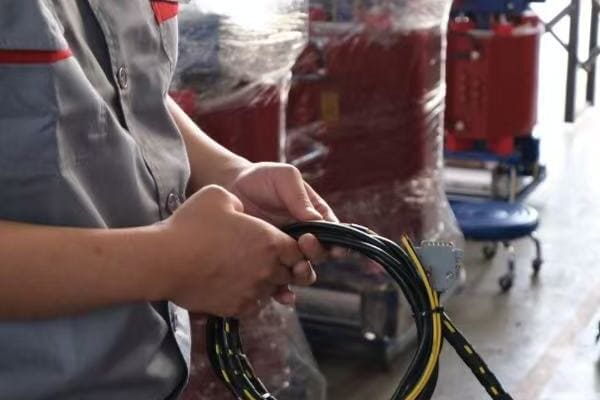
Comparing Use Cases for Power and Distribution Transformers
Let’s explore specific scenarios:
- Power Generation and Transmission
- Industrial Applications
- Urban and Residential Distribution
- Renewable Energy Integration
- Special Applications
Power Generation and Transmission
Power Transformers:
- Used in power plant step-up applications
- Essential in high-voltage transmission substations
- Interconnection points between regional grids
I recently worked on a project connecting a new combined cycle power plant to the national grid, where we used a 400 MVA power transformer to step up the voltage from 20kV to 400kV for long-distance transmission.
Distribution Transformers:
- Used in local substations for final voltage step-down
- Found in distribution networks feeding neighborhoods
Industrial Applications
Power Transformers:
- Large manufacturing plants with high power demands
- Steel mills and other heavy industries
- Mining operations with on-site power generation
Distribution Transformers:
- Light to medium industrial facilities
- Commercial complexes and office parks
- Shopping centers and large retail establishments
Here’s a comparison of industrial applications:
| Industry Type | Typical Transformer | Reason for Choice |
|---|---|---|
| Steel Mill | Power Transformer | High, constant load |
| Office Park | Distribution Transformer | Variable, lower load |
| Data Center | Power or Large Distribution | Depends on size and redundancy needs |
Urban and Residential Distribution
Power Transformers:
- City-wide substations feeding large areas
- Universities or large institutional campuses
Distribution Transformers:
- Residential neighborhoods
- Individual buildings or small groups of buildings
- Utility poles and underground vaults in urban areas
Renewable Energy Integration
Power Transformers:
- Large wind farms or solar parks
- Hydroelectric power plants
- Grid-scale energy storage facilities
Distribution Transformers:
- Small to medium solar installations
- Community-scale wind projects
- Local energy storage systems
Special Applications
Power Transformers:
- Traction substations for electrified railways
- Large desalination plants
- Specialized research facilities (e.g., particle accelerators)
Distribution Transformers:
- Electric vehicle charging stations
- Temporary power for construction sites
- Backup power systems for critical infrastructure
Key points for choosing between power and distribution transformers:
- Consider the voltage levels and capacity requirements
- Evaluate the load characteristics (constant vs variable)
- Assess the installation environment and space constraints
- Factor in future expansion and load growth
- Consider the overall system design and integration needs
In my experience, the choice between power and distribution transformers often requires a nuanced understanding of both immediate needs and long-term plans. I recall a project for a rapidly expanding industrial park where we initially installed large distribution transformers. As the park grew, we transitioned to a power transformer substation, showcasing how transformer choices can evolve with changing demands.
For example, in a recent smart city project, we implemented a hybrid approach. We used power transformers for the main city substations and a network of smart distribution transformers throughout the urban area. This combination allowed for efficient high-voltage transmission to the city and flexible, responsive distribution within it, accommodating various load profiles from residential areas to commercial districts.
As we move on to discuss top transformer brands for industrial and utility projects, keep these use cases in mind. Understanding when to use each type of transformer will help you appreciate the strengths and specializations of different manufacturers in meeting diverse project needs.
Top Transformer Brands for Industrial and Utility Projects?
Are you overwhelmed by the number of transformer brands available for your industrial or utility project? Choosing the right manufacturer can be crucial for ensuring reliability, efficiency, and long-term performance of your power system. But which brands stand out in the market, and what unique strengths do they offer for different types of projects?
Leading transformer brands for industrial and utility projects include ABB, Siemens, TBEA, and CHBEB. ABB excels in high-voltage power transformers with advanced digital solutions. Siemens offers a wide range of both power and distribution transformers with high efficiency. TBEA specializes in ultra-high voltage transformers for large-scale projects. CHBEB provides cost-effective distribution transformers with strong customization capabilities. Each brand has unique strengths suited to different project requirements and regional markets.
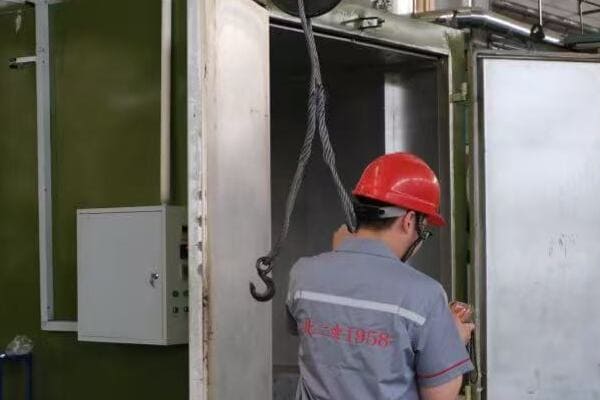
Analyzing Top Transformer Brands
Let’s examine the strengths of leading manufacturers:
- ABB
- Siemens
- TBEA
- CHBEB
- Factors to Consider in Brand Selection
ABB
Strengths and specializations:
- Leader in high-voltage power transformers
- Advanced digital monitoring and control systems
- Strong presence in global markets
I recently worked on a project where ABB’s power transformers with integrated digital solutions significantly improved the reliability and efficiency of a large substation.
Siemens
Notable features:
- Comprehensive range of both power and distribution transformers
- Focus on energy efficiency and environmental sustainability
- Strong R&D in smart grid technologies
During a recent grid modernization project, Siemens’ transformers with advanced voltage regulation features proved invaluable in integrating renewable energy sources.
TBEA
Key advantages:
- Expertise in ultra-high voltage transformers
- Strong presence in emerging markets
- Cost-effective solutions for large-scale projects
Here’s a comparison of these top brands:
| Brand | Key Strength | Best For | Notable Feature |
|---|---|---|---|
| ABB | Digital integration | High-voltage transmission | ABB Ability™ digital solutions |
| Siemens | Energy efficiency | Diverse applications | Sensformer® advanced monitoring |
| TBEA | UHV expertise | Large-scale projects | Experience in 1000kV+ systems |
| CHBEB | Cost-effectiveness | Distribution networks | Strong customization capabilities |
CHBEB
Distinctive features:
- Specializes in distribution transformers
- Strong customization capabilities
- Competitive pricing for emerging markets
I recently oversaw a project in Southeast Asia where CHBEB’s ability to quickly deliver customized distribution transformers was crucial for meeting tight project deadlines.
Factors to Consider in Brand Selection
When choosing a transformer brand, consider:
- Project-specific voltage and capacity requirements
- Regional standards and certifications
- After-sales support and spare parts availability
- Total cost of ownership, including efficiency and maintenance
- Compatibility with existing infrastructure
Key points about top transformer brands:
- ABB leads in high-voltage and digital integration
- Siemens offers a wide range with a focus on efficiency
- TBEA excels in ultra-high voltage and large-scale projects
- CHBEB provides cost-effective solutions for distribution
- Brand selection should align with specific project needs and regional requirements
In my experience, choosing the right brand often involves balancing technical specifications, cost, and long-term support. I’ve seen cases where a less globally recognized brand like CHBEB was the perfect fit due to their ability to provide rapid customization and local support.
For example, in a recent project upgrading the power distribution in a rapidly developing industrial zone, we chose a mix of Siemens power transformers for the main substations and CHBEB distribution transformers for local networks. This combination allowed us to leverage Siemens’ advanced technology for critical high-voltage applications while benefiting from CHBEB’s cost-effectiveness and flexibility for the more numerous distribution points.
As we move on to our final decision guide, remember that the choice of brand should be guided by your specific project requirements, budget constraints, and long-term operational needs. The right transformer manufacturer can be a valuable partner in ensuring the success and efficiency of your power distribution system.
Final Decision Guide: Matching Transformer Type to Project Needs?
Are you still unsure about which type of transformer is best for your specific project? Making the right choice between power and distribution transformers, and selecting the appropriate brand, can be complex. But what if you had a clear, step-by-step guide to help you navigate this decision-making process?
To choose the right transformer, first determine your voltage requirements and load capacity needs. For voltages above 66kV or loads over 5 MVA, consider power transformers. For lower voltages and capacities, opt for distribution transformers. Assess your installation environment, future expansion plans, and specific industry requirements. Consider factors like efficiency, cooling needs, and maintenance. Finally, match these requirements with the strengths of different brands to make an informed decision.

Step-by-Step Decision Guide
Let’s walk through the decision-making process:
- Assess Voltage and Capacity Requirements
- Evaluate Installation Environment
- Consider Future Expansion
- Analyze Efficiency and Loss Factors
- Match Requirements to Brand Strengths
Assess Voltage and Capacity Requirements
Start with your basic needs:
- Determine primary and secondary voltage levels
- Calculate required capacity based on load analysis
- Consider peak loads and potential overload scenarios
I recently guided a client through this process for a new data center project. By carefully analyzing their power needs, we determined that a 20 MVA power transformer was necessary to meet both current demands and future expansion plans.
Evaluate Installation Environment
Consider the physical context:
- Indoor or outdoor installation?
- Space constraints and accessibility
- Environmental factors (temperature, humidity, altitude)
During a project in a coastal industrial area, we opted for specially designed transformers with enhanced corrosion resistance to withstand the harsh, salty environment.
Consider Future Expansion
Plan for growth:
- Estimate load increases over the next 5-10 years
- Consider potential changes in power distribution needs
- Evaluate the cost-benefit of oversizing now vs. upgrading later
Here’s a quick guide for future-proofing:
| Scenario | Recommendation | Reasoning |
|---|---|---|
| Rapid Growth Expected | Oversize Now | Avoid costly upgrades |
| Uncertain Growth | Modular Approach | Flexibility for expansion |
| Stable Load | Match Current Needs | Cost-effective solution |
Analyze Efficiency and Loss Factors
Optimize for long-term performance:
- Compare efficiency ratings of different models
- Evaluate no-load and load losses
- Consider the impact on long-term operating costs
Match Requirements to Brand Strengths
Align needs with manufacturer capabilities:
- For high-voltage, large capacity: Consider ABB or TBEA
- For energy efficiency focus: Look at Siemens
- For cost-effective distribution: Explore CHBEB options
Key points for the final decision:
- Start with a clear understanding of voltage and capacity needs
- Factor in the specific installation environment
- Plan for future growth and changes in power requirements
- Prioritize efficiency for long-term cost savings
- Choose a brand that best aligns with your specific needs
In my experience, this systematic approach to transformer selection can lead to significant long-term benefits. I recall a project where initially, the client was inclined towards a lower-cost option. However, after going through this decision process, they opted for a more efficient, slightly oversized transformer. This choice resulted in lower operating costs and accommodated an unexpected expansion just two years later.
For instance, in a recent renewable energy project, we used this guide to select transformers for a large solar farm. By carefully considering future expansion plans and the need for smart grid integration, we chose Siemens transformers with advanced monitoring capabilities. This decision not only met the immediate project needs but also positioned the facility for easy integration with future energy storage systems.
Remember, the right transformer choice is about more than just meeting current specifications. It’s about creating a flexible, efficient, and future-proof power distribution system. By following this guide and considering all factors, you can make a decision that will serve your project well for years to come.
Conclusion
Choosing between power and distribution transformers requires careful consideration of voltage levels, capacity needs, installation environment, and future expansion plans. By understanding the strengths of different transformer types and brands, and following a systematic decision-making process, you can optimize your power system for efficiency, reliability, and long-term performance.
Remember, at chbeb-ele, we’re not just sharing information – we’re empowering you to be part of the solution in creating a secure, clean, and efficient energy future. Let’s continue this journey together.
Free CHBEB Transformer Catalog Download
Get the full range of CHBEB transformers in one catalog.
Includes oil-immersed, dry-type, pad-mounted, and custom solutions.
Quick Message
Request A free quote
We'd like to work with you
- +86 15558785111
- [email protected]
- +86 15558785111
What We Do
CHINA BEI ER BIAN (CHBEB) GROUP, with 218 million in registered capital, originated from Beijing Beierbian Transformer Group. Headquartered in Beijing for R&D, it operates major production bases in Nanjing and Yueqing, producing high-quality products.
Latest Product
address
BeiJing
No 3,RongJing East Road,BeiJing Economic Technological Development Area,BeiJing,China
JiangSu
No 7️Xiangfeng Road,Jiangning,NanJing,JiangSu,China
WenZhou
No.211, Wei 16 Road, Industrial Zone, Yueqing, Wenzhou, Zhejiang, China.
XiangYang Industrial Zone ,YueQing,WenZhou,ZheJiang,China
contact us
- [email protected]
- +86 13057780111
- +86 13057780111
- +86 15558785111
Copyright © Bei Er Bian Group


